‘Ghastly, frightful’: The last Australian executed by hanging
The hanging of Ronald Ryan, the last man executed in Australia, was a ghastly spectacle for the newsmen gathered and divided national opinion.
At 7.58am on February 3, 1967, a Friday, they gathered behind a rope in Cell Block D at Her Majesty’s Prison Pentridge, in the northern Melbourne suburb of Coburg.
Fourteen reporters, all men, were there in the cathedral-like space of the 1850s jail standing 25m from the gallows where a hangman was about to execute Ronald Joseph Ryan.
The scaffold was a white-painted heavy hanging beam taken from old Melbourne Gaol, where it had been used to hang 135 condemned prisoners including Ned Kelly and several woman.
The newsmen, there to represent the people of Victoria, would thereafter be haunted by what they would describe as “ghastly, frightful” and “the most deliberate, callous and barbaric act I have ever witnessed”.
Ronald had spent his last night alive in Pentridge’s maximum security H Division, in his death cell refusing a sedative so he could write a final letter to his daughters.
‘GOODBYE MY DARLINGS’
He signed it, “Goodbye, my darlings … Lovingly yours, Dad”.
At home in Hawthorn, 14km south of the prison, Jan, Wendy and Rhonda, known as Pip, were huddled in the lounge room with their mother Dorothy, who had turned off the radio.
Outside the prison gates, with tops of 35C predicted, a hot wind blew dust over the sombre crowd of 3000, who stood arm-in-arm as the countdown to the execution dwindled.
Overnight, police had arrested 97 protesters as anger boiled over at Victorian Premier Henry Bolte’s refusal to commute Ryan’s death sentence.
Despite contradictory accounts about Ryan’s guilt in the shooting murder of Pentridge warder George Hodson during a prison escape while he was serving eight years for multiple breaking and entering offences, all avenues of appeal had been exhausted.
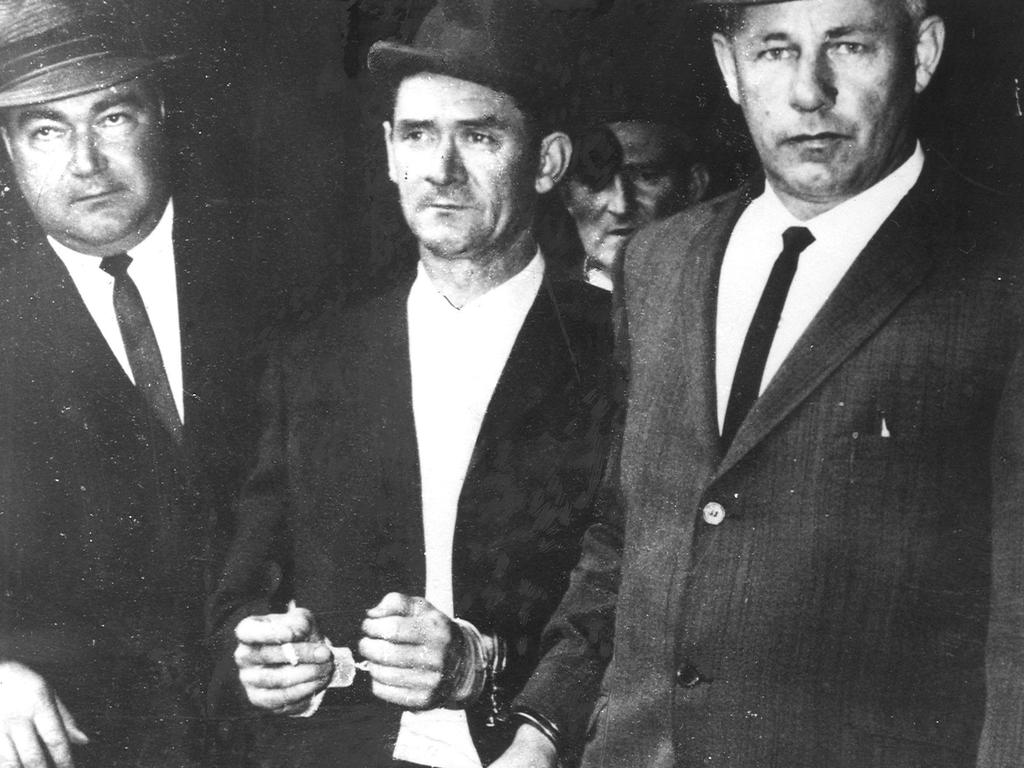
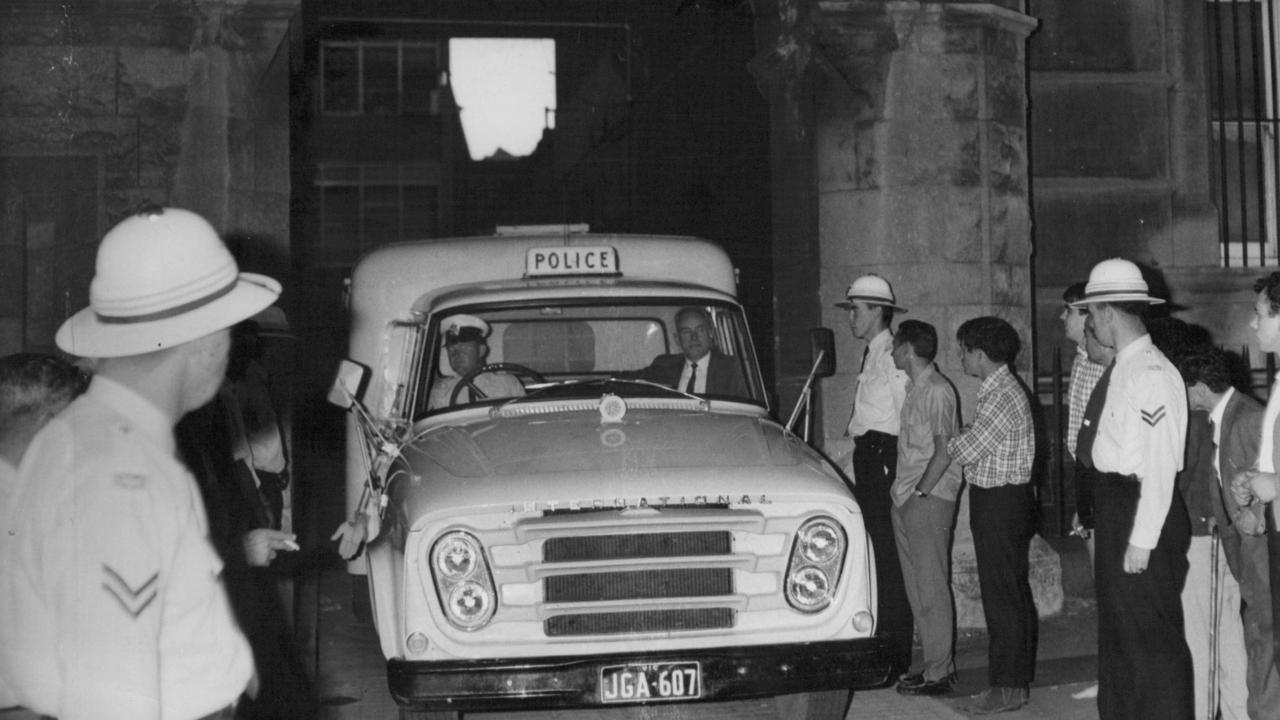
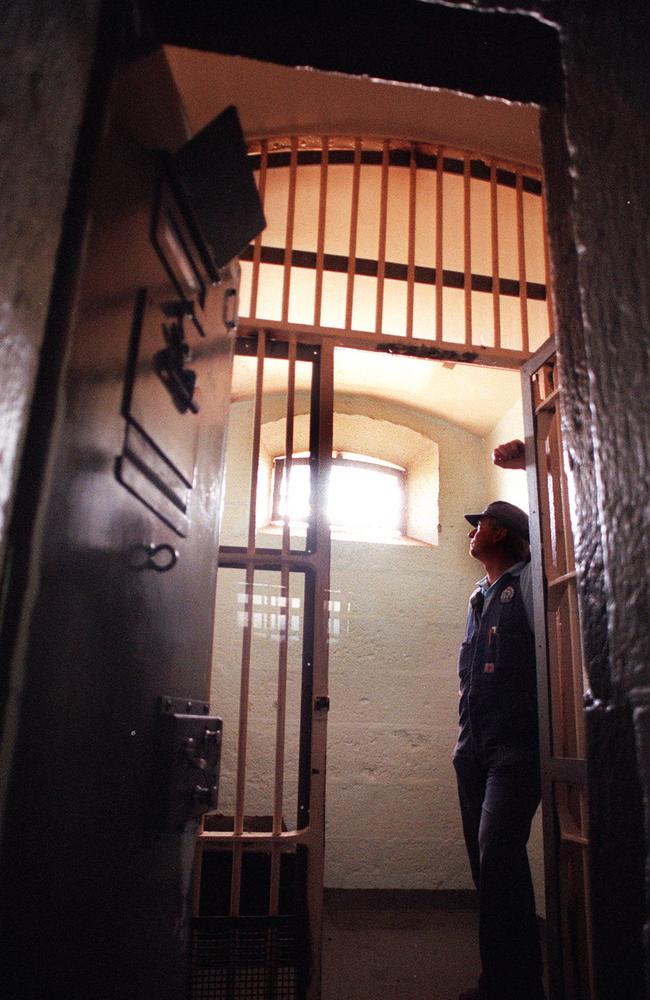
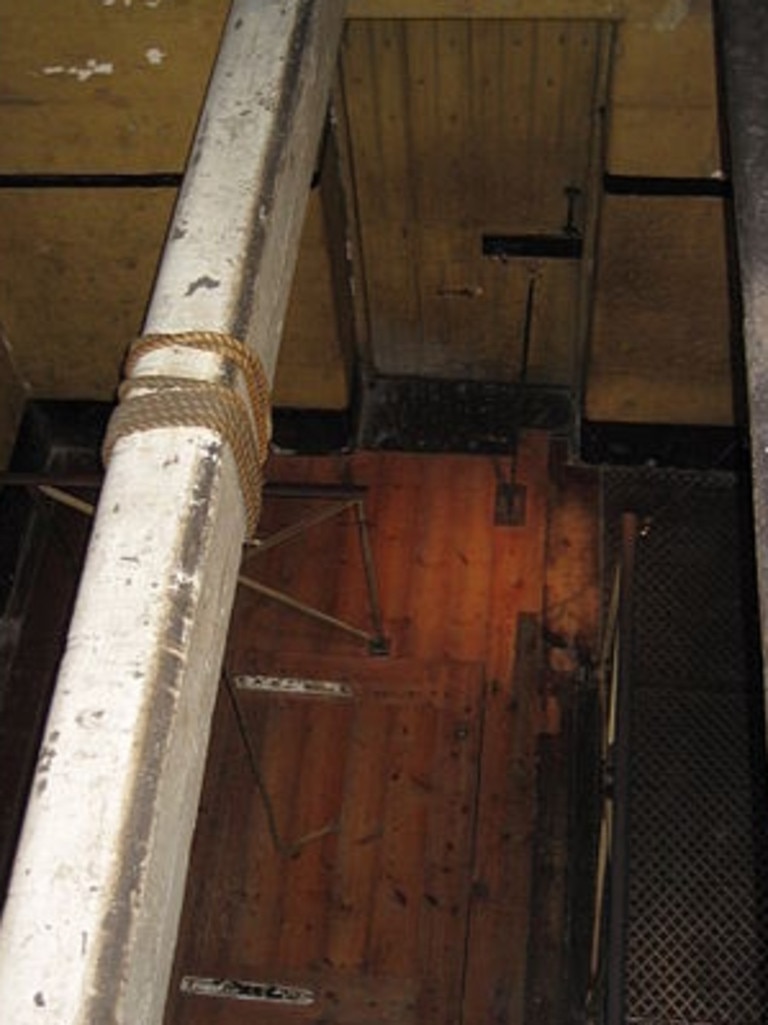
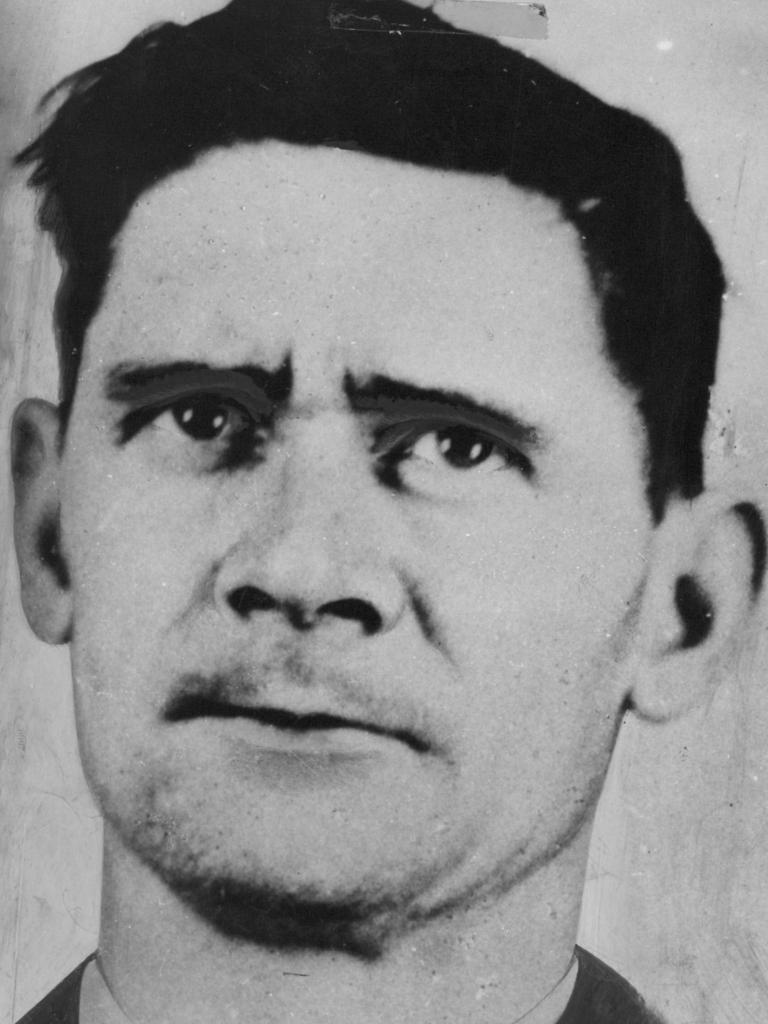
The pugnacious, ultra conservative Bolte was determined Ryan would die; outside the gates one of the placards read “no evidence, hang Bolte”.
Inside the long cell block, painted green, the white gallows beam ran between first floor prison cells above a railed catwalk with a trapdoor.
A khaki tarpaulin, about 5m wide by 4m high was hung, from the bottom of the catwalk to just above the floor.
This would shield observers from the medieval horror that was the reality of a hanged man, as newsman Ron Saw put it, “bloody, bulging eyeballs, the distended tongue, the clothing soiled”.
THE HANGMAN
Saw and other news reporters including Evan Whitton and Patrick Tennison would describe the appearance of the hangman, none of them kindly.
Whitton said he was a tall, stooped old man with straggly grey hair and a red, sunburnt neck who had boasted he had “carried out executions throughout Australia and beyond … for the past 38 years”.
He emerged from a cell on the opposite landing wearing “welder’s goggles and a green Mao Zedong cap” and stepped on to the catwalk, staring at the door to Ryan’s cell for a moment.
He wound a honey-coloured rope with a knotted noose at one end six times around the massive beam, leaving the noose dangling over the trap.
Then sheriff, Gerry O’Brien, and the prison governor walked in a slow, awful procession over creaking boards towards the death cell to fetch Ryan.
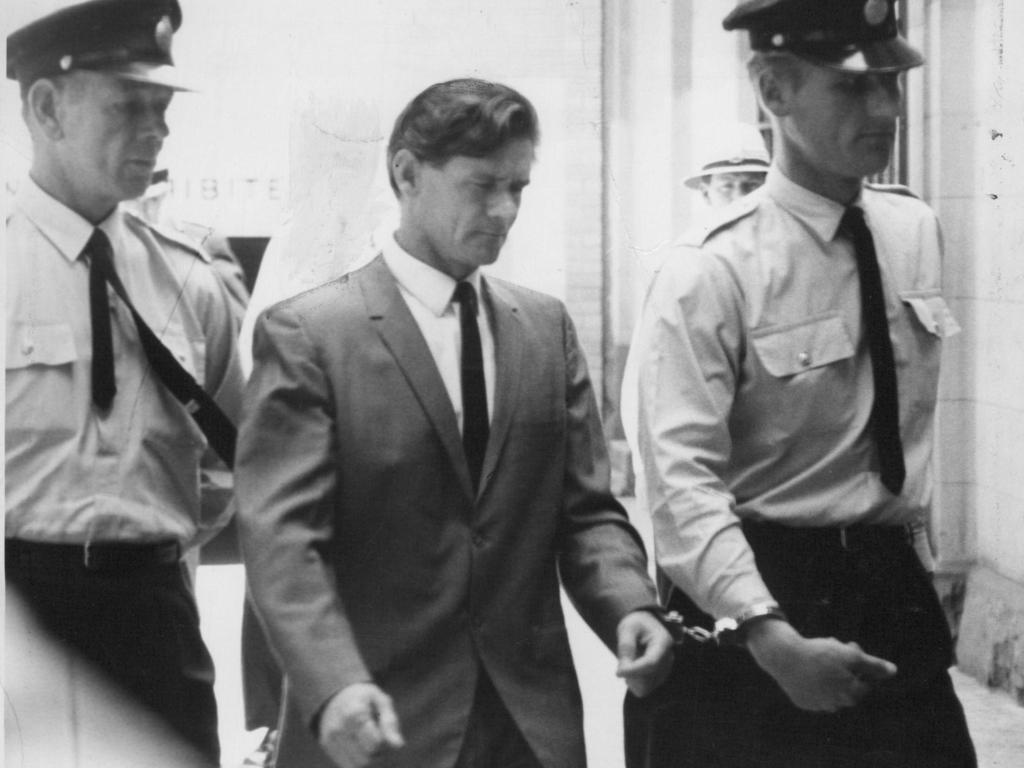
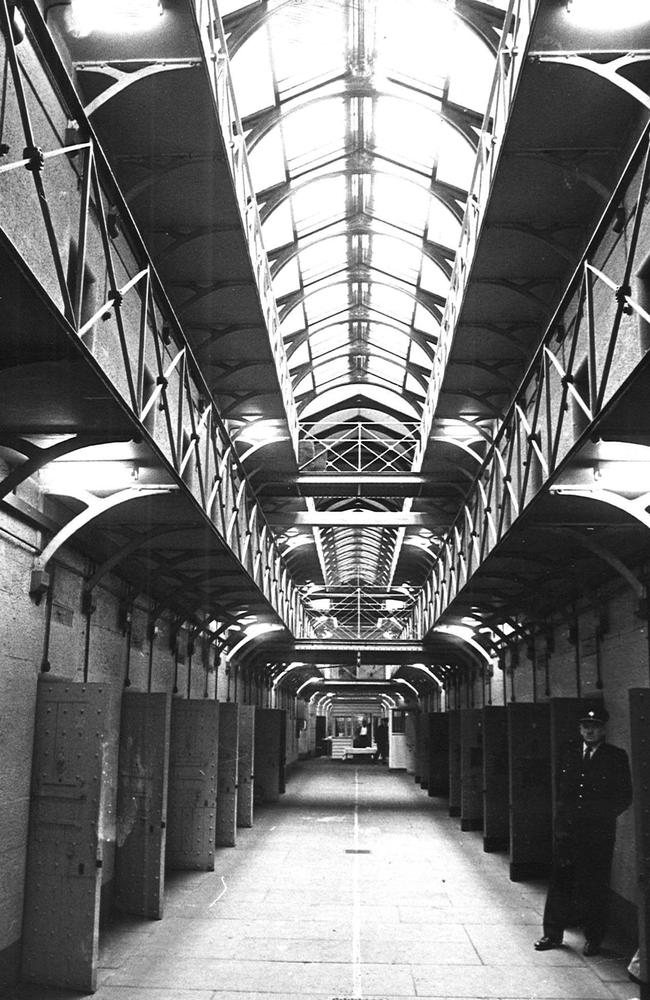
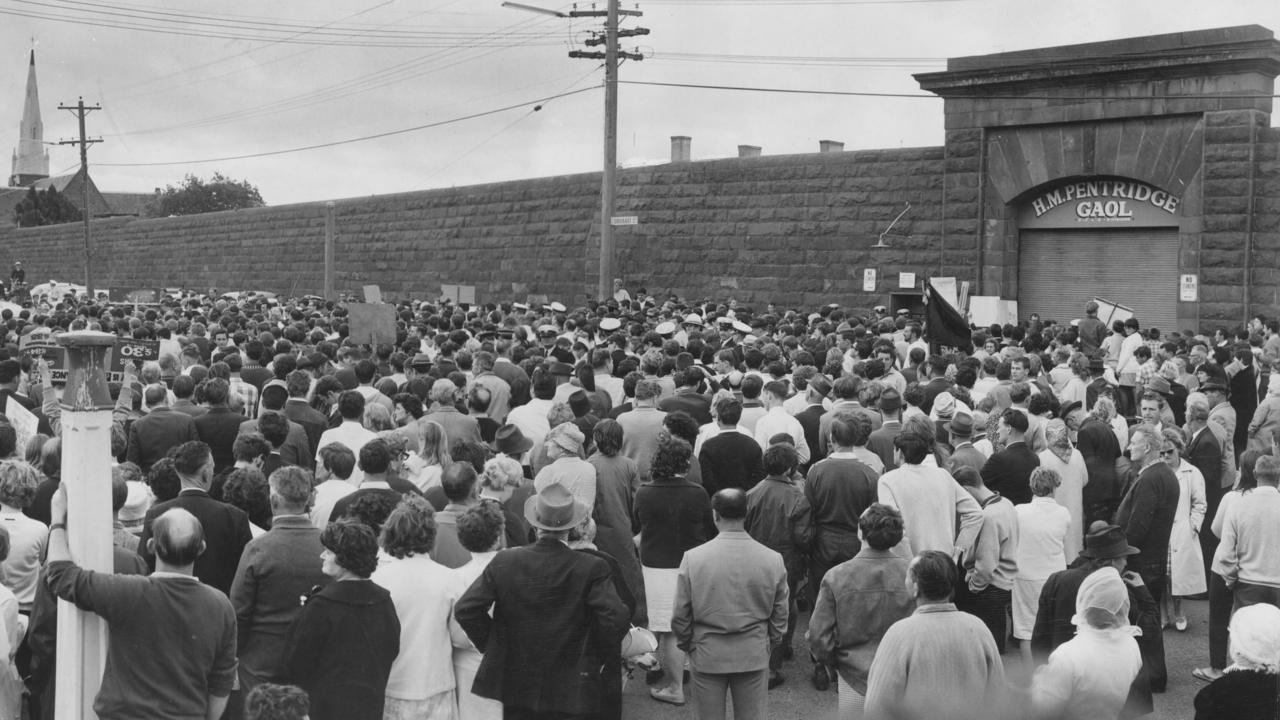

At 40 seconds to eight Ryan was led out. His hands were manacled behind his back.
Ryan emerged wearing blue prison denims and was walked five long paces to the scaffold and turned so that he now faced the newsmen.
Patrick Tennison described Ryan’s face as “white but impassive … strangely like a small child who had composed himself into calm bravery just before the doctor gives a needle”.
Ron Saw thought him childlike as well, though pink in the face and with eyes that held “a message of despair”.
Ryan “hardly seemed to be a man at all … more like a boy waiting to be caned.”
Whitton said that “at last it came to Ryan that he was about to die. ‘Well,’ he said, waving a hand at the gallows, ‘that or 30 years of this?’.”
Outside, the walls rattled in gusts of wind.
THE LIFE OF RYAN
Ronald Ryan was born in 1925 in Melbourne to parents in an abusive relationship and he and his three sisters were declared neglected and made wards of the state.
He stole a neighbour’s watch aged 11, absconded from a boys’ home aged 14 and became a kangaroo shooter and rail sleeper cutter at Balranald in NSW”s Riverina district.
Aged 25, he converted from Catholicism to the Church of England to marry Dorothy George, a suburban Melbourne mayor’s daughter.
As Dorothy had three daughters, Ryan had a succession of jobs, as a trainee mechanic timber cutting and as a rail service painter.
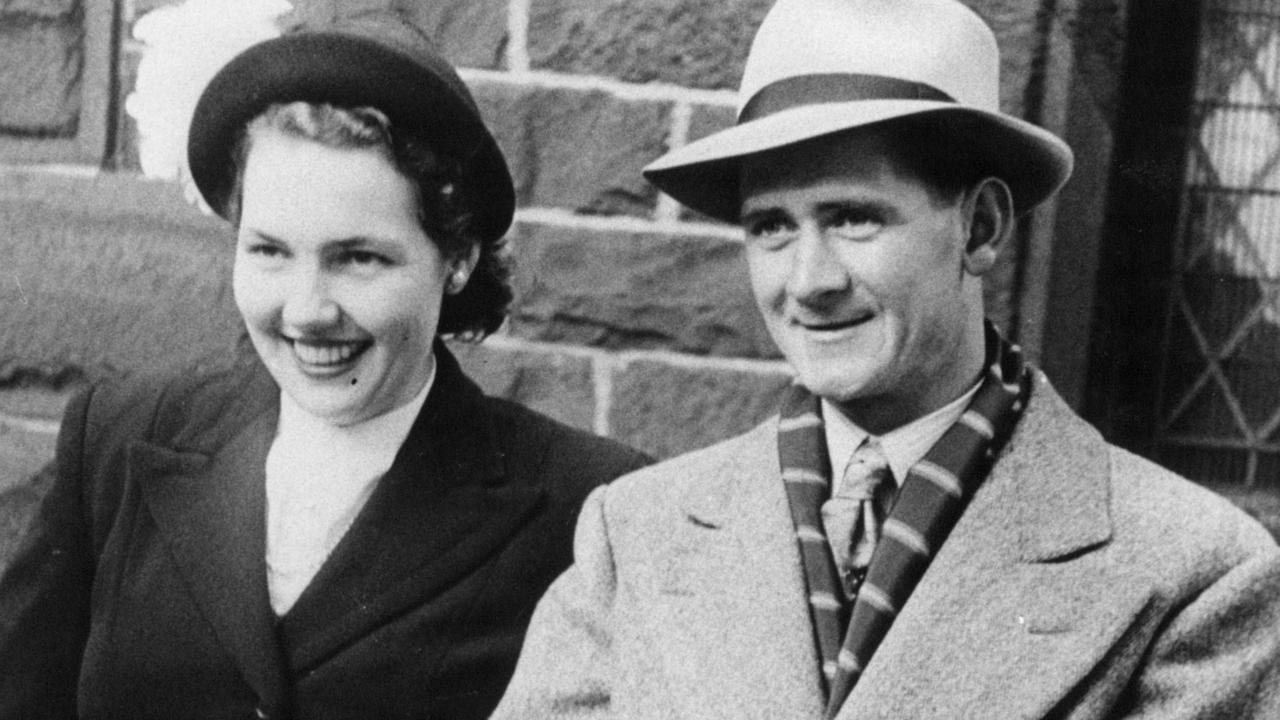
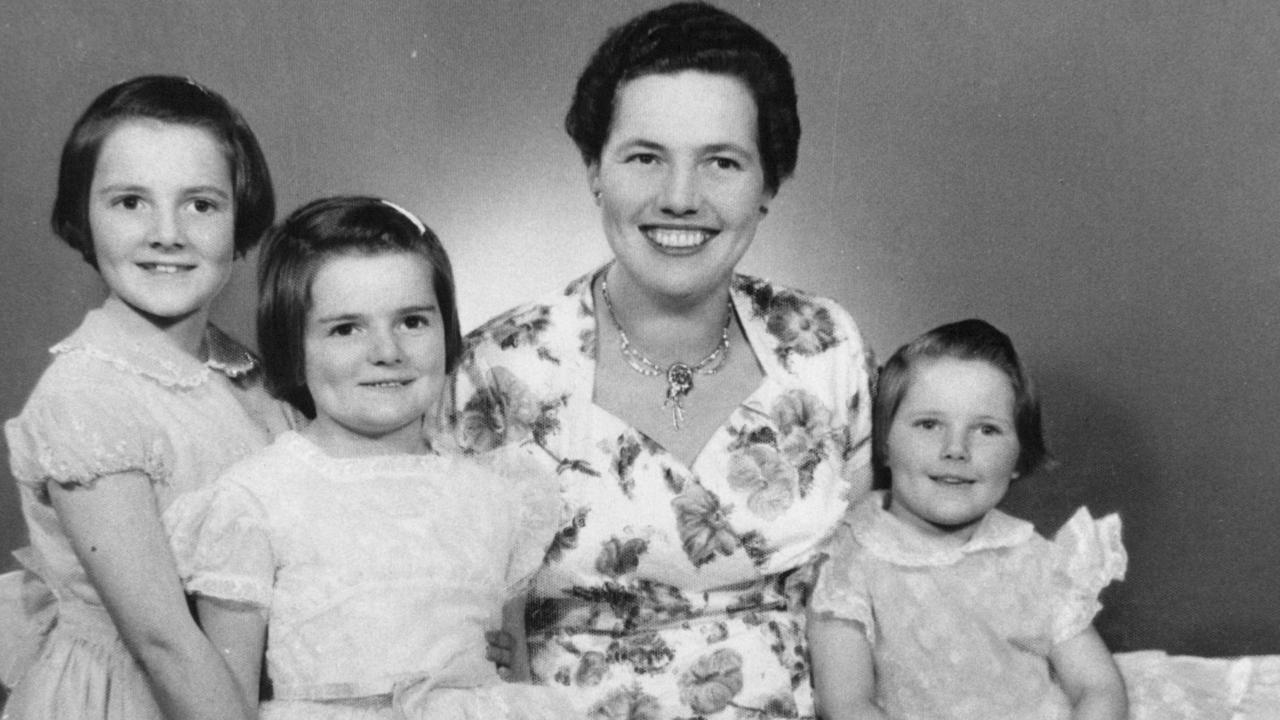
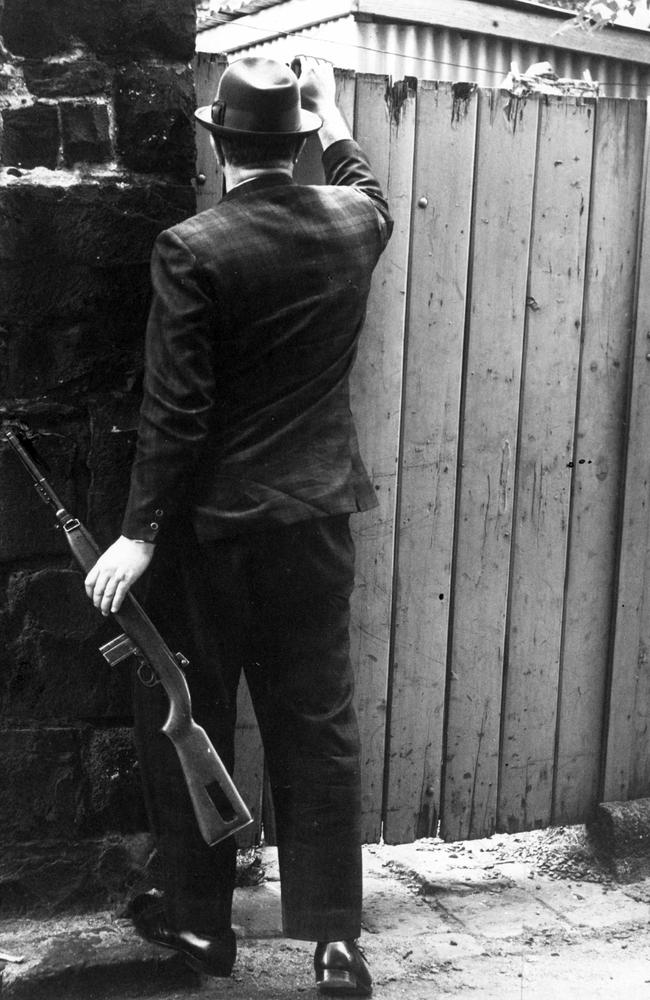
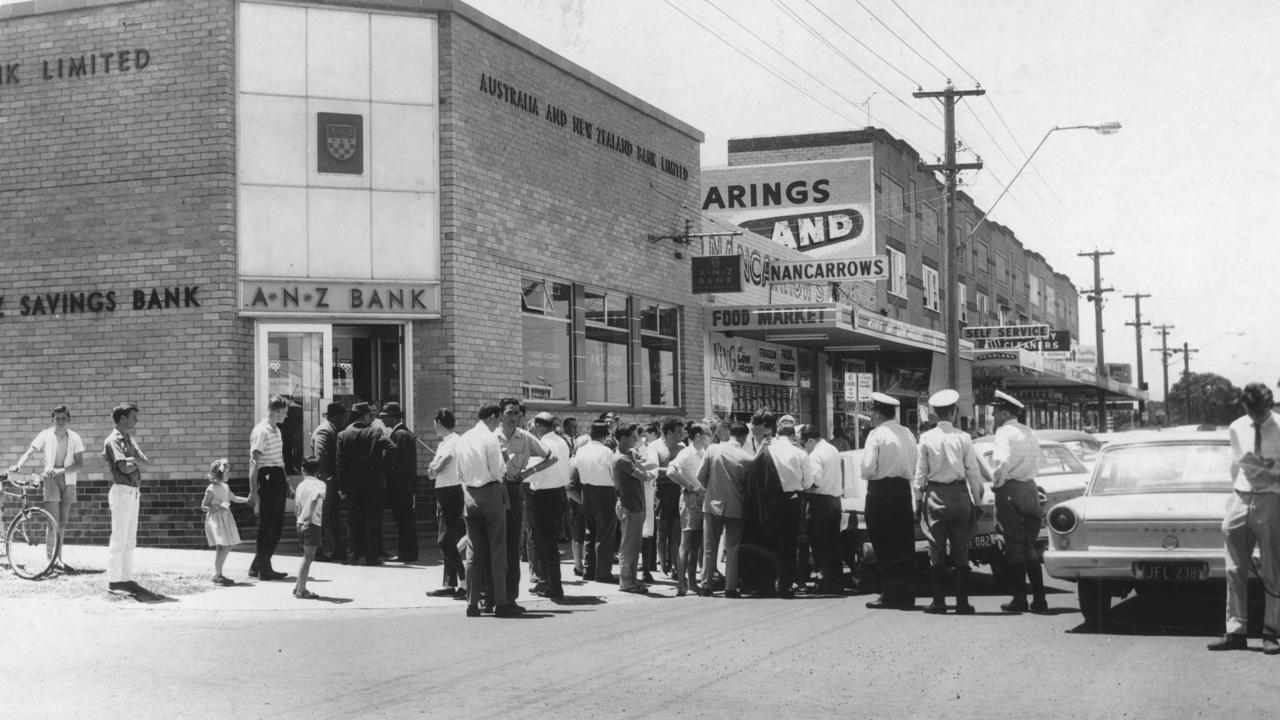
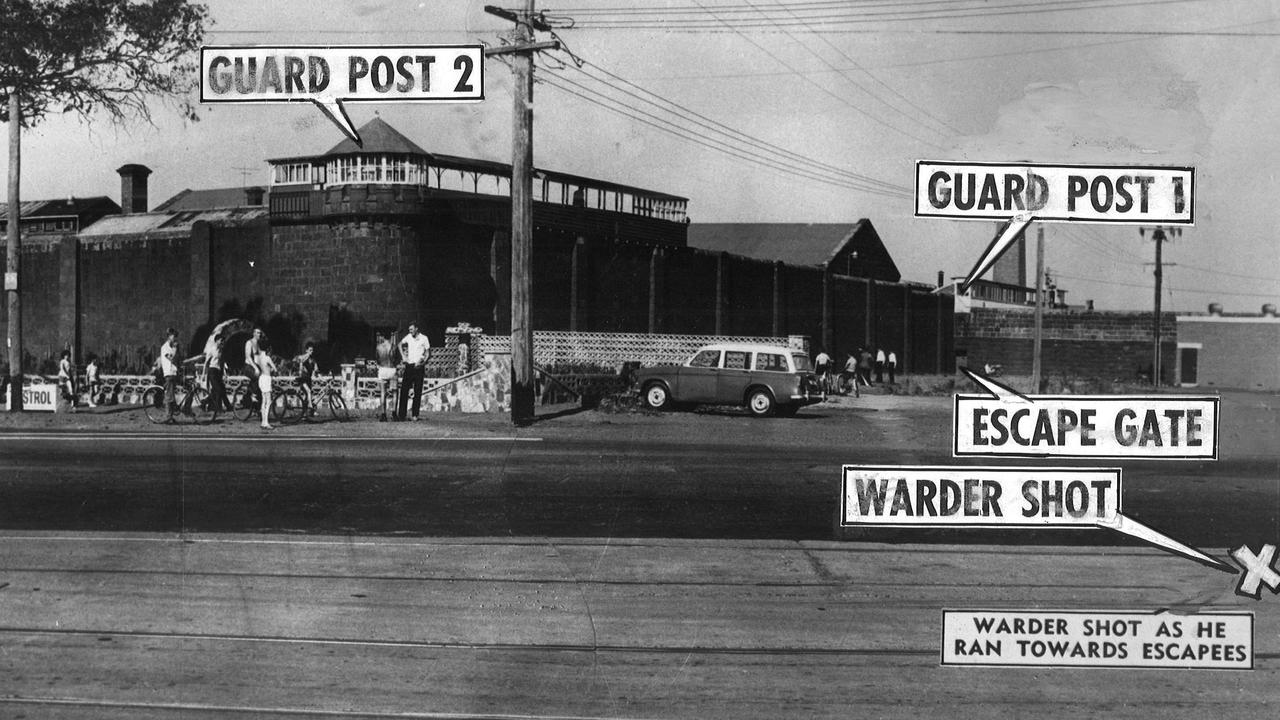
But he would fall into gambling, stealing and forging cheques and then graduating to robbery.
In 1960, aged 35, Ryan pleaded guilty to multiple charges of breaking and stealing and was sentenced to eight-and-a-half years’ prison.
At Bendigo Prison he completed his school leaving certificate and was studying for his matriculation pass when he was paroled in 1963.
He gained a job as a clerk, but after a few months reverted to safe blowing and robbing butcher shops.
After getting caught, he fled to NSW where he committed nine robberies over three months in 1964.
Skipping the state for Victoria, he was arrested and sentenced to eight years in Pentridge for breaking and entering.
Ryan was placed in B division where he met bank robber Peter Walker.
In late 1965 he learned Dorothy was planning to divorce him and he made a plan with Walker to escape.
SHOT DEAD
Just after 2pm on Sunday, December 19, 1965, as prison officers were attending a Christmas party at Pentridge, the two inmates scaled a 5m prison wall to overpower a guard in the watchtower.
They took his rifle and made it into the prison car park where they assaulted a jail chaplain and fled onto a street.
When a warder raised the prison alarm, indicating an escape, prison officer George Hodson responded and grappled with Walker.
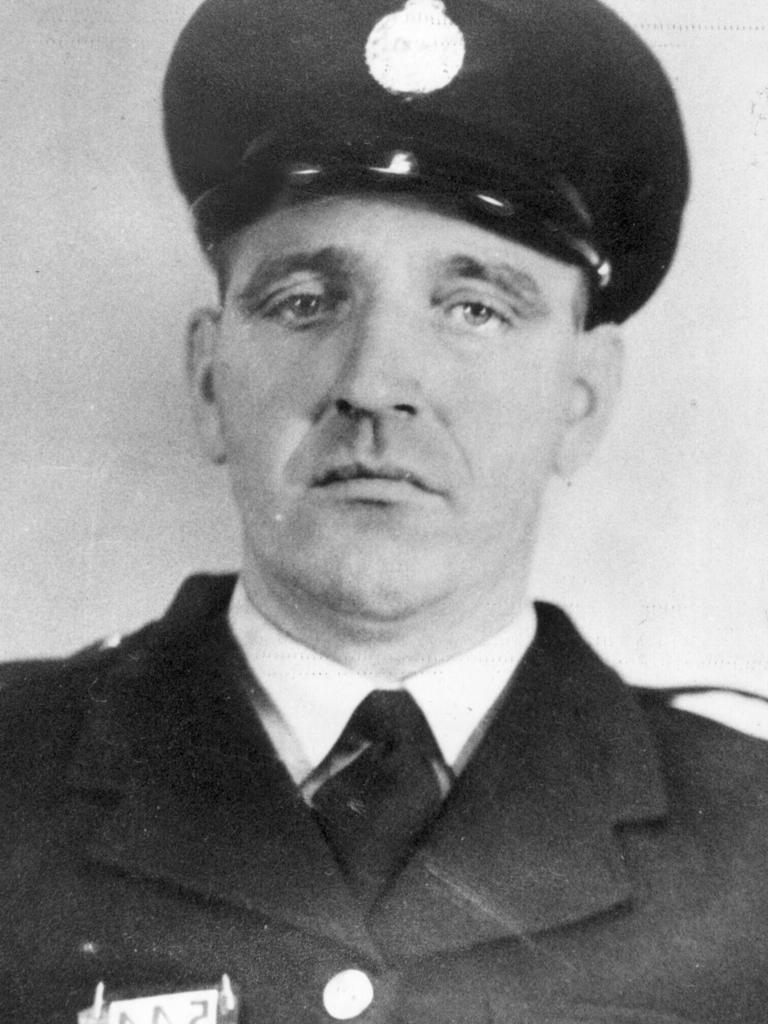
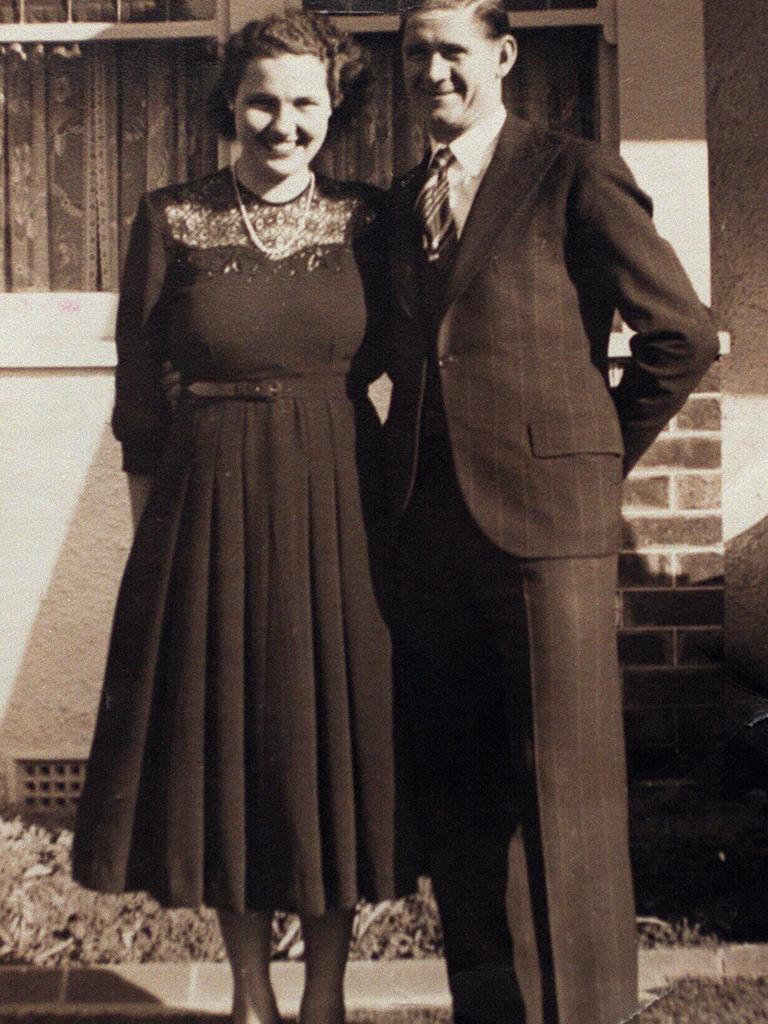
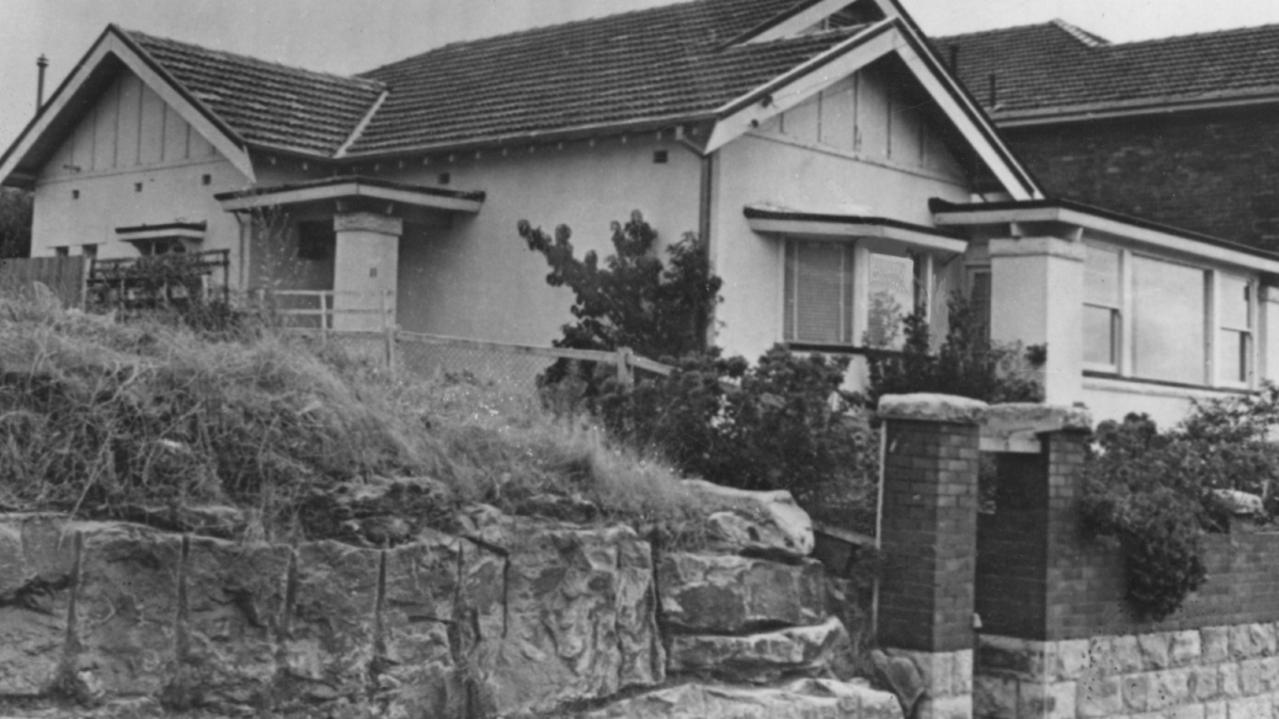
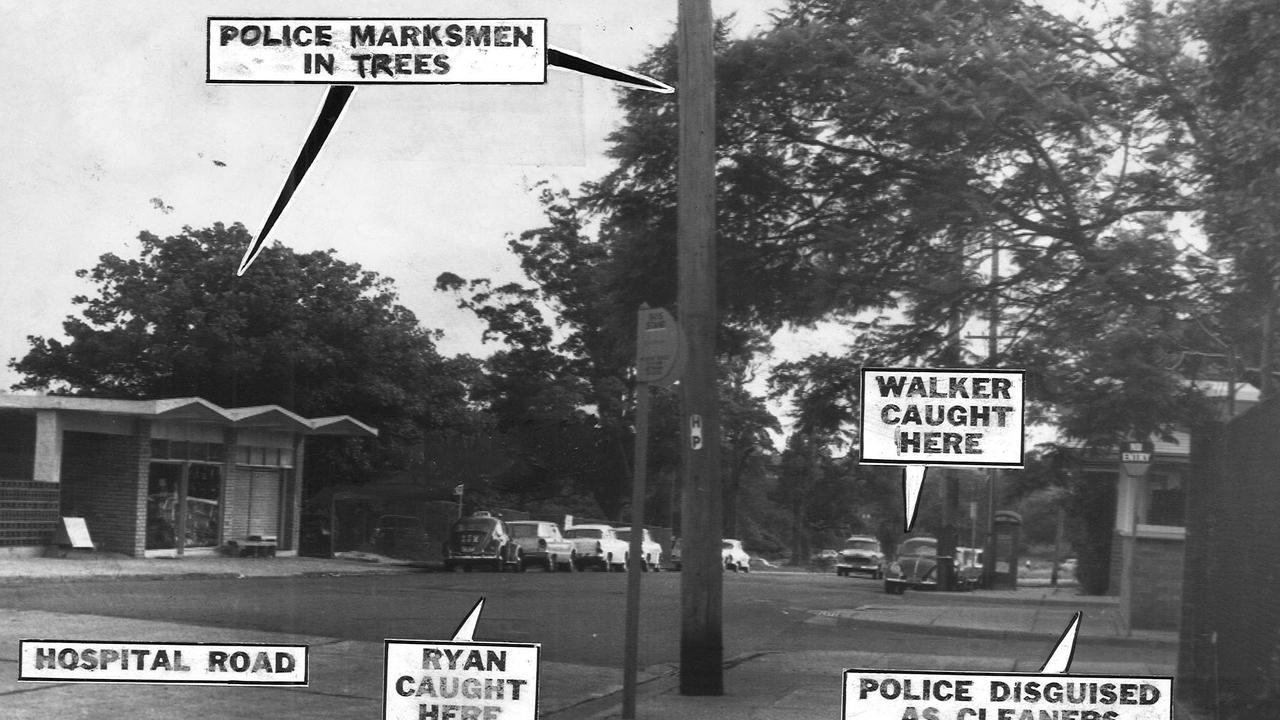
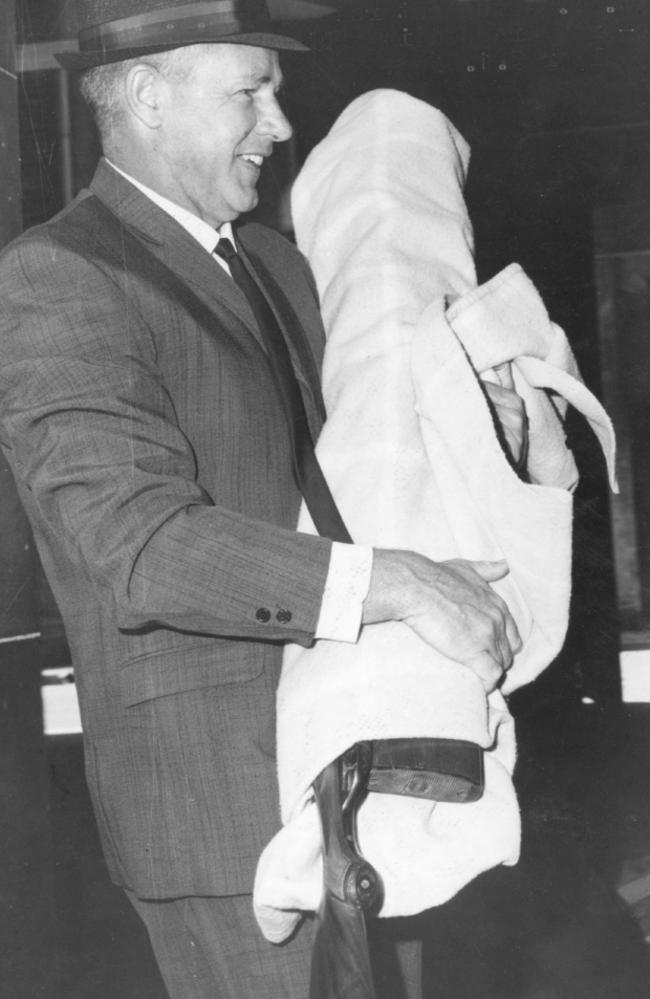
In a scene later hotly disputed, it was said by some witnesses that Ryan was waving the rifle at cars, trying to get them to stop.
When Walker, chased by Hodson, approached, Ryan shot the prison officer in the chest and he dropped in the street.
The escapees commandeered a passing car and began 19 days on the run.
They robbed a bank two days before Christmas, and went into hiding before leaving for Sydney on New Year’s Day.
When Ryan arranged to meet up with a woman at Concord Hospital on the evening of January 6, the woman’s daughter tipped off police.
THE GUNNER
Legendary Sydney detective Ray “Gunner” Kelly led a heavily armed contingent of 50 officers to surround the hospital.
Ryan and Walker pulled up and, as arranged with the woman, Walker stayed in the car while Ryan went to a telephone box which police had disabled, forcing him to call at a nearby shop.
Tackled by six detectives, he dropped a loaded .32 revolver.
In the men’s car, police found a shotgun, two rifles and three handguns, all fully loaded, an axe, a hacksaw, a jemmy, rope and two boiler suits.
Extradited to Victoria, the pair were jointly tried for Hodson’s murder.
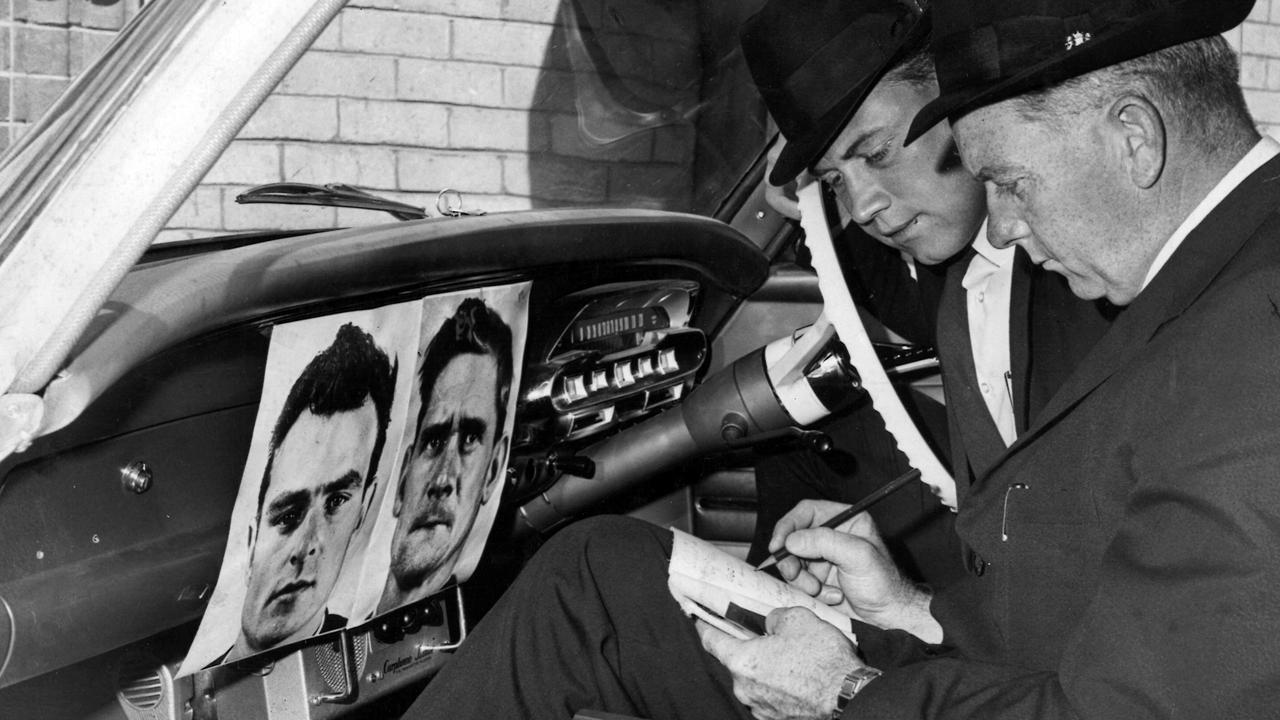
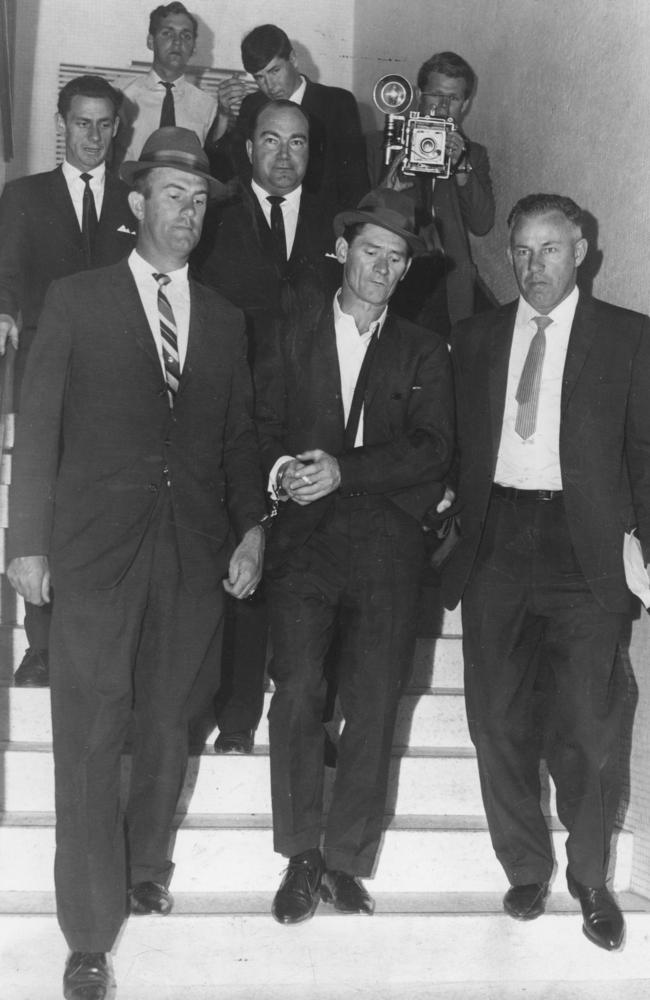
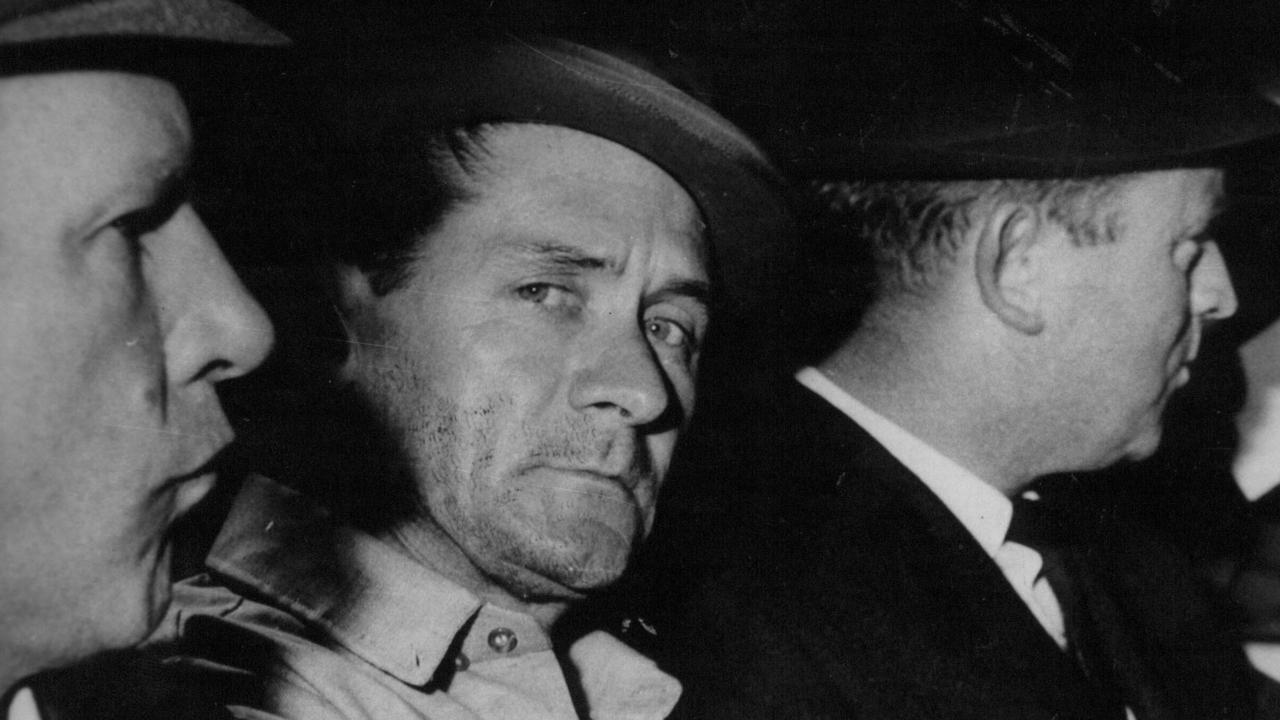
Ryan’s counsel, Philip Opas, argued that the fatal shot which hit Hodson could not have been fired by Ryan, and could have come from armed prison officer Robert Paterson.
Ryan testified at the trial that he had not shot Hodson and, like Ned Kelly, his story would enter Australian criminal mythology.
Ned Kelly’s story is a man hounded by police and forced to defend himself in the final shootout at Glenrowan, Victoria.
Ryan’s is as an innocent man wrongly hanged.
Twenty-five years after his execution, a witness for the Crown in Ryan’s trial would declare that he had seen Ryan take aim and shoot Hodson.
Philip Opas wrote a letter to the Victorian Bar Association, saying Ryan’s last words to him were, “We’ve all got to go sometime, but I don’t want to go this way for something I didn’t do”.
Victorian barrister, Julian Burnside, who would campaign against the 2015 executions in Indonesia of Bali Nine ringleaders Andrew Chan and Myuran Sukumaran, concluded Ryan was guilty but his punishment was wrong.
BOLTE REFUSES ALL PLEAS FOR MERCY
After a 12-day trial in March 1966, the jury found Ryan guilty of murder and Justice John Starke imposed the mandatory sentence of death.
The case divided public opinion.
As the Victorian Court of Criminal Appeal and the full bench of the High Court of Australia rejected Ryan’s appeals, Henry Bolte cut off his access to legal aid.
Opas resolved to continue defending Ryan though unpaid and filed a petition to the Privy Council in London.
On December 12, 1966, Bolte’s cabinet announced Ryan would hang on January 9, 1967.
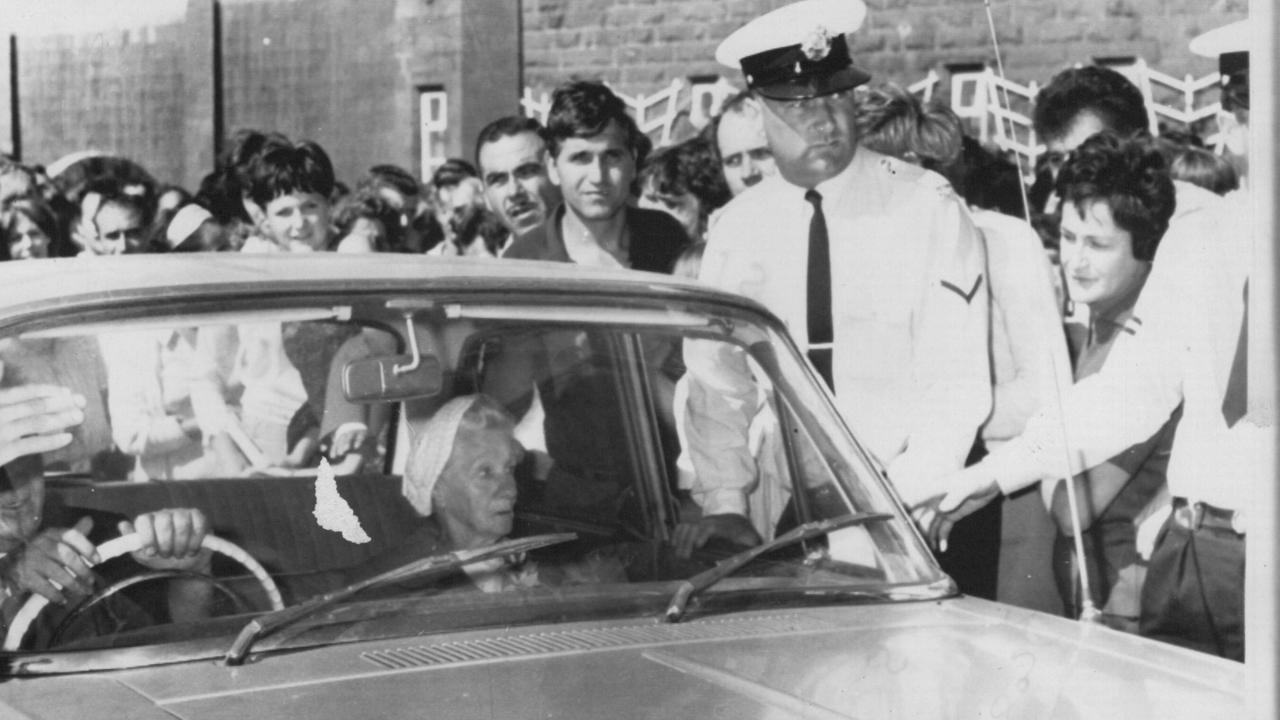
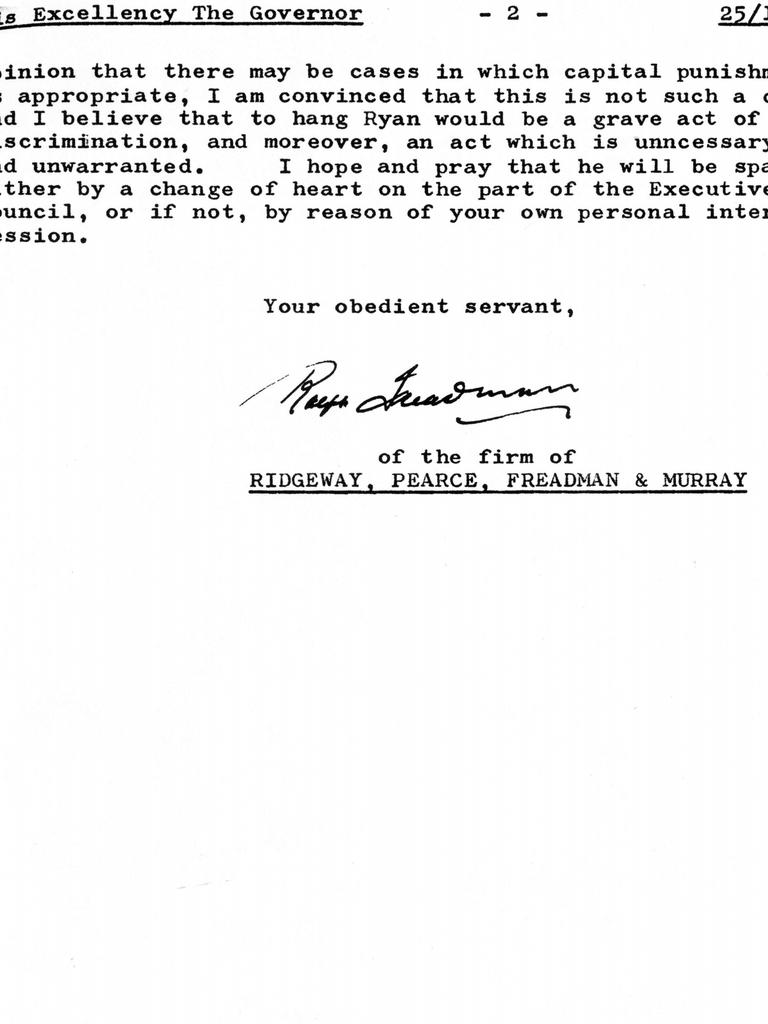
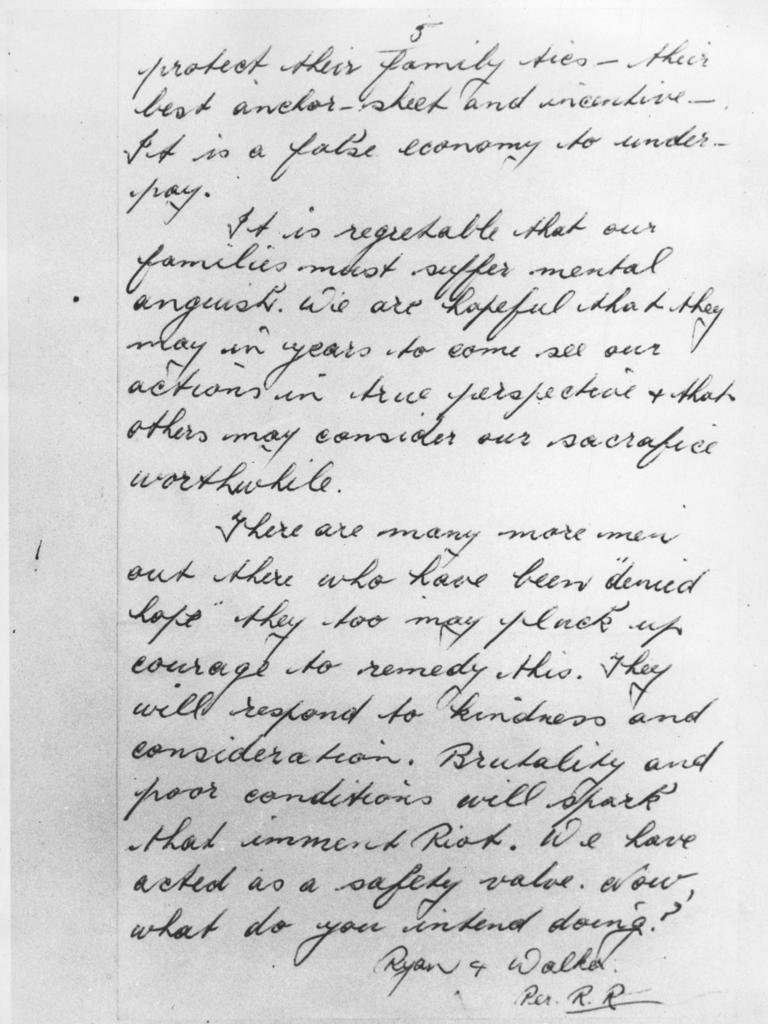
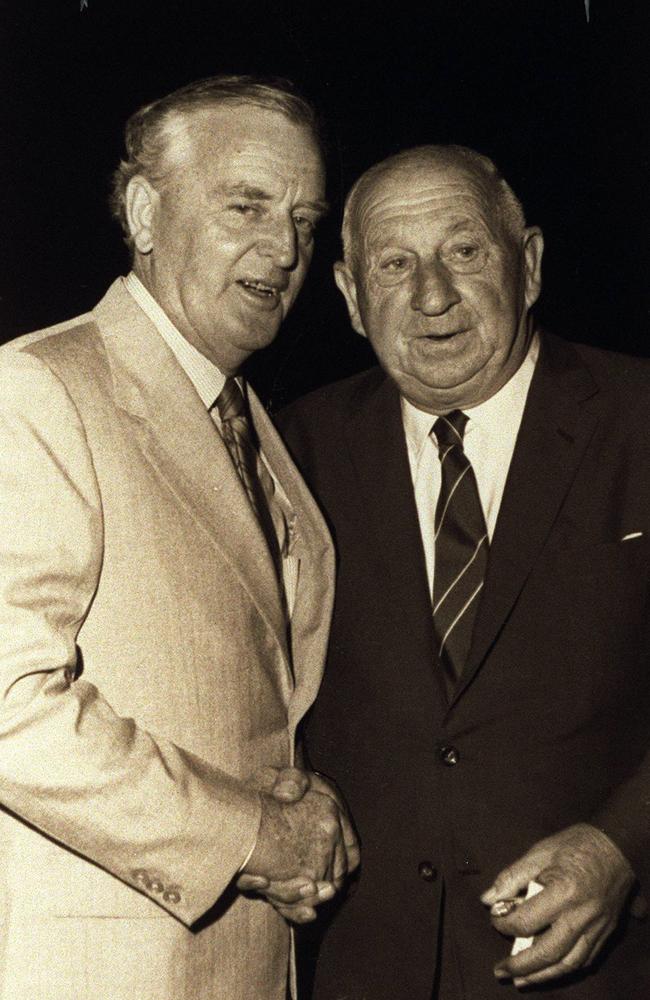
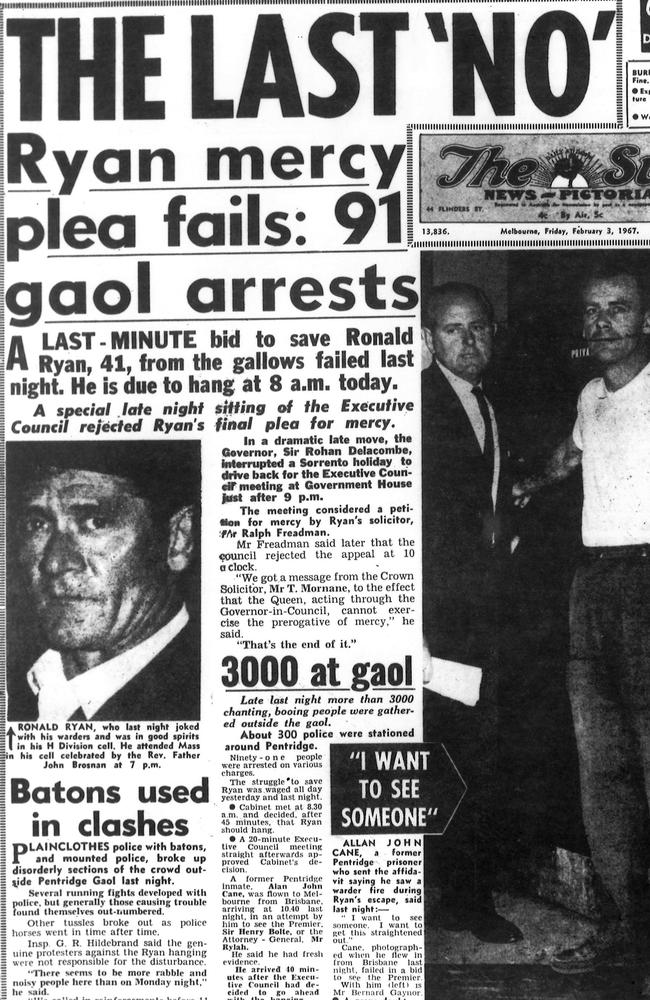
Protesters took to the streets, newspapers campaigned that execution was barbaric and thousands signed petitions.
Seven of Ryan’s jurors wrote to Bolte’s cabinet pleading for his mercy, one later saying “we didn’t want the rope”.
Bolte denied all pleas for mercy.
On January 4, 1967, Ryan’s execution was stayed pending Opas’ Privy Council petition.
The Privy Council Judicial Committee refused Ryan leave for appeal and after a further stay, Ryan’s execution was scheduled for February 3.
At 11pm on February 2, Ryan was told that his final petition for mercy had been unsuccessful.
DEATH IN 25 SECONDS
Nine hours later across Melbourne, trams and trains came to a halt throughout the city and workers on building sites downed tools in protest.
Inside Cell Block D, Ryan’s executioner “scuttled” forward with what the newsmen thought was unnecessary haste to pinion Ryan and hustle him above the trapdoor.
The hangman trussed Ryan’s arms, and wound a length of unbleached calico in folds around his forehead.
Ron Saw described this headwear as “a sort of cap … rather like something from the Ku Klux Klan, its frontal mask lifted”.
The hangman stood up with the noose.
He dropped it over Ryan’s head and “firmly, even roughly, he tugged it, jerked it four or five times until it sat properly under” Ryan’s chin.
He stood back and pulled the calico flap down over Ryan’s face.
Evan Whitton described this and the hangman’s next movement as “telescoped … into one rapid blur”.
“With his right hand he gave the rope a last violent wrench,” Whitton wrote.
“With his left he jerked the calico down over Ryan’s face and chest. He sprang backwards and sideways and downwards.
“And then, crouching and looking up at Ryan, he used both hands to work the lever that drew the bolts of the trapdoor.”
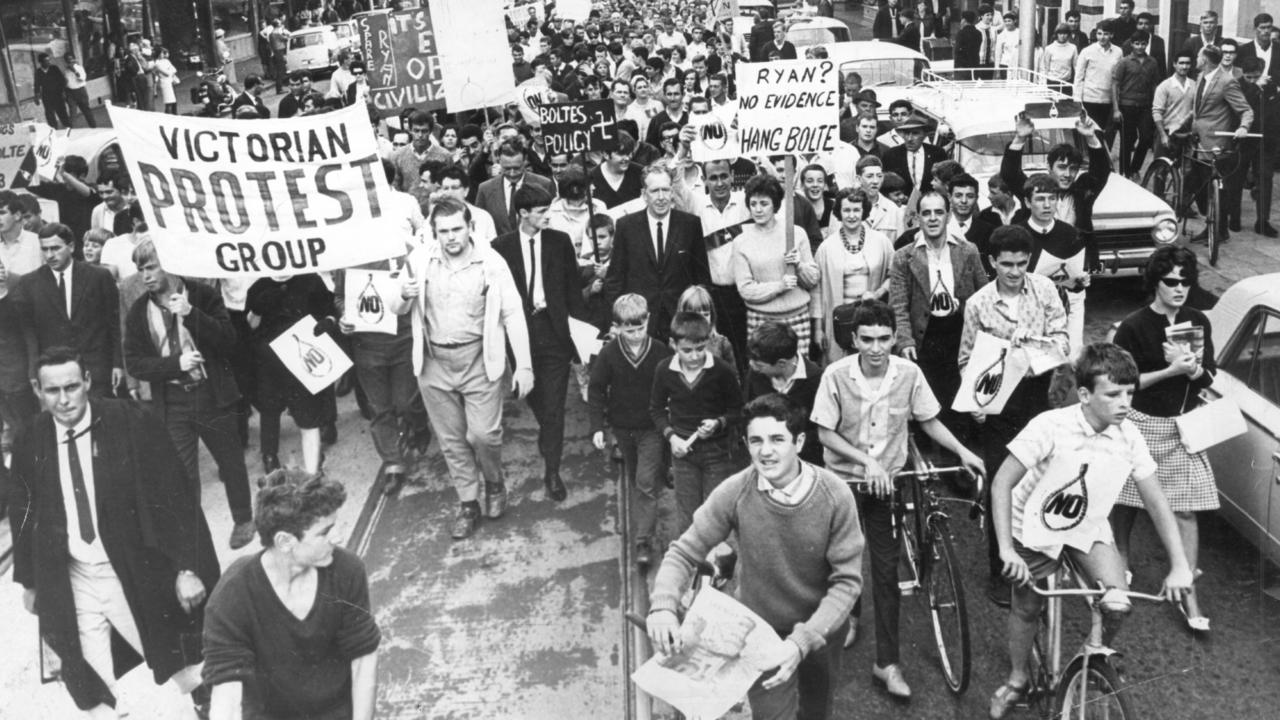
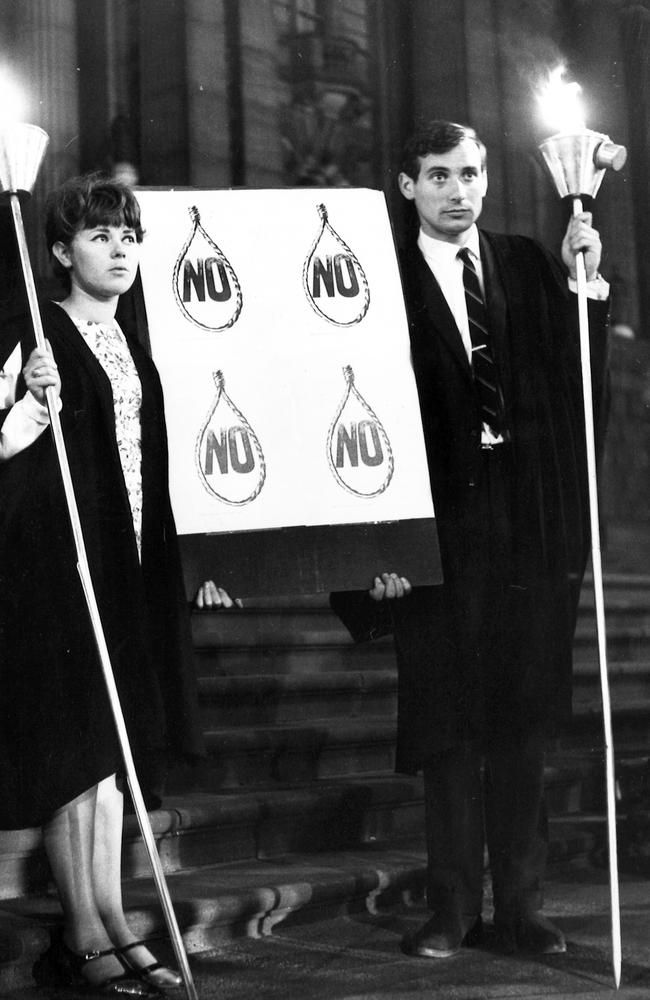
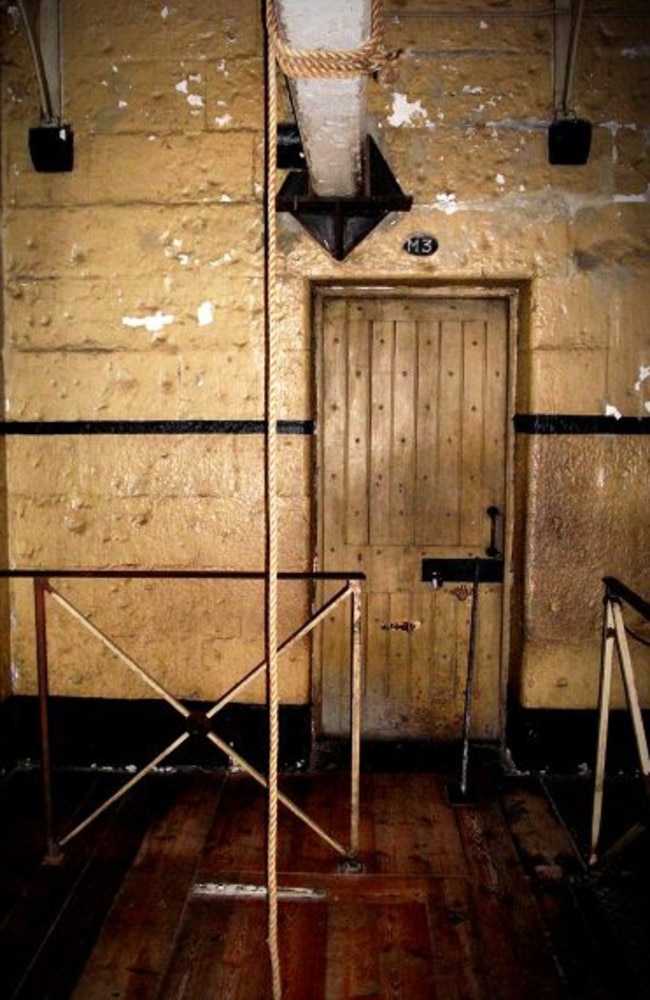
TRAP DOOR AT EIGHT SHARP
“The trap door opened efficiently at eight,” Patrick Tennison observed.
With a clap of the trap and no sound from Ryan, he fell from view.
The rope jerked with a thud against the beam and vibrated. Up in the roof a starling fluttered; outside, a woman shouted: “Hang Bolte!”
Father John Brosnan and Dr Allan Bartholomew, the prison psychiatrist, stepped behind the khaki sheet.
Father Brosnan had oil, called chrism, blessed by a bishop the previous Holy Thursday into which he dipped his thumb and made the sign of the cross on Ryan’s forehead.
From behind the sheet he could be heard giving Ryan his last rites as Bartholomew
pronounced Ryan dead.

His body was taken off the rope and carried by stretcher to the prison hospital, where the government pathologist, Dr Jim McNamara, performed a post mortem.
Ryan was put in a plain coffin and buried in the grave dug for another man in the grounds of Pentridge and marked only with a code number.
In 2007, Ryan’s children had his body exhumed for reburial elsewhere.
The death penalty was abolished at different times during the 20th century in Australian states, starting with Queensland in 1922 and ending with NSW in 1985.
But NSW’s last ever execution had been the hanging of John Trevor Kelly at Long Bay jail in 1939.
Ronald Ryan’s would be Australia’s last, after the execution by hanging of Western Australian serial killer Eric Edgar Cooke at Fremantle Prison in 1964.




